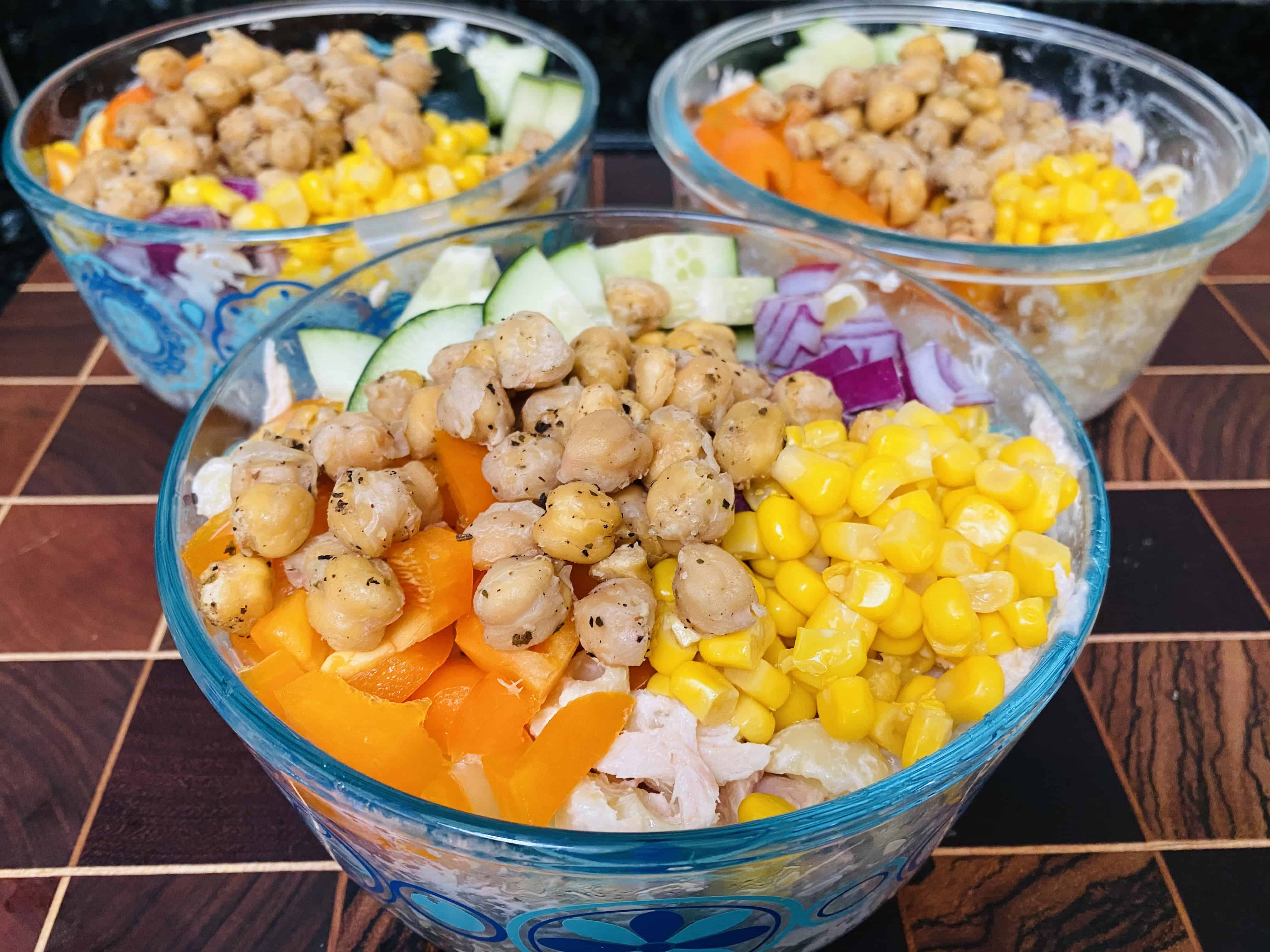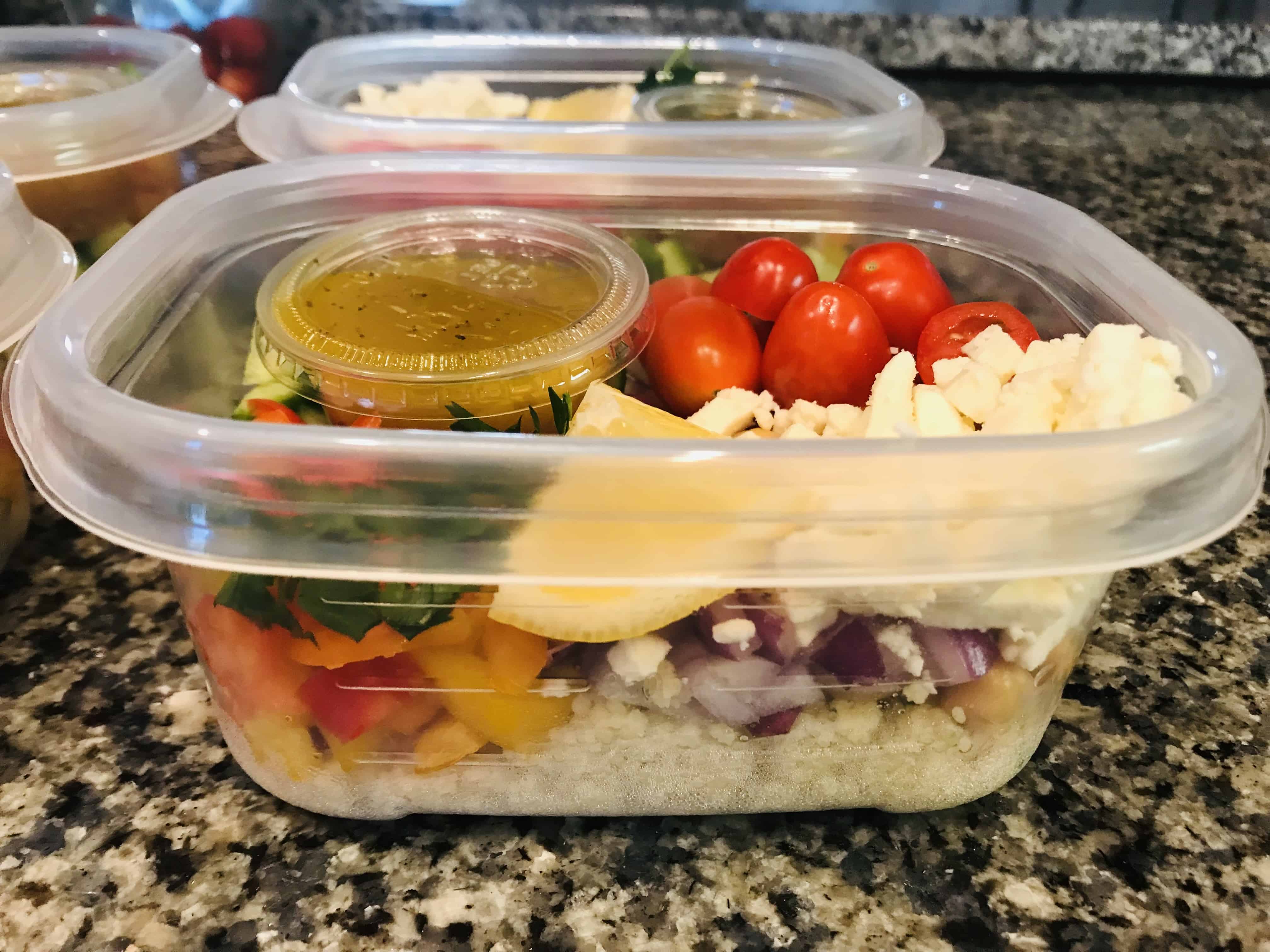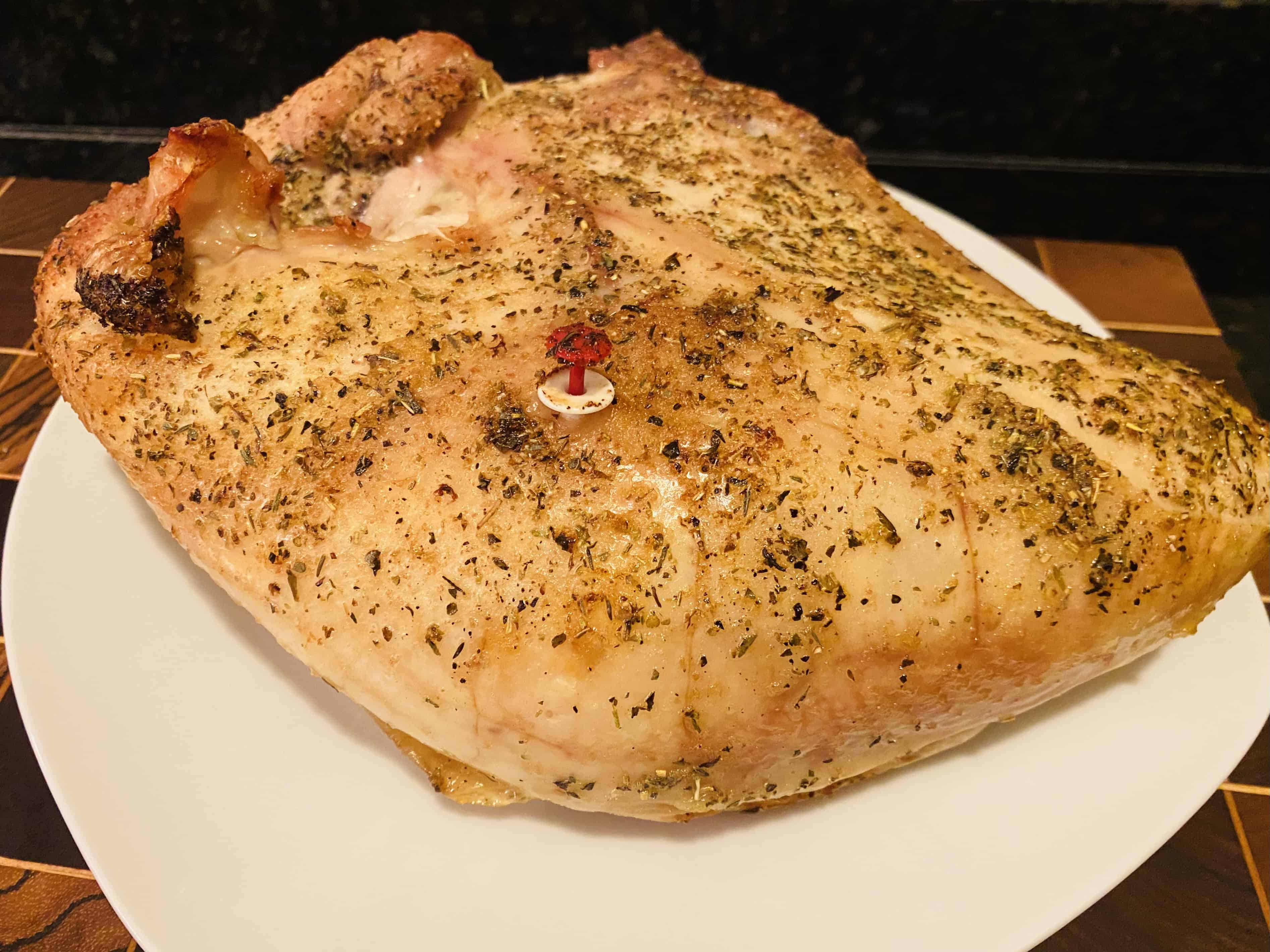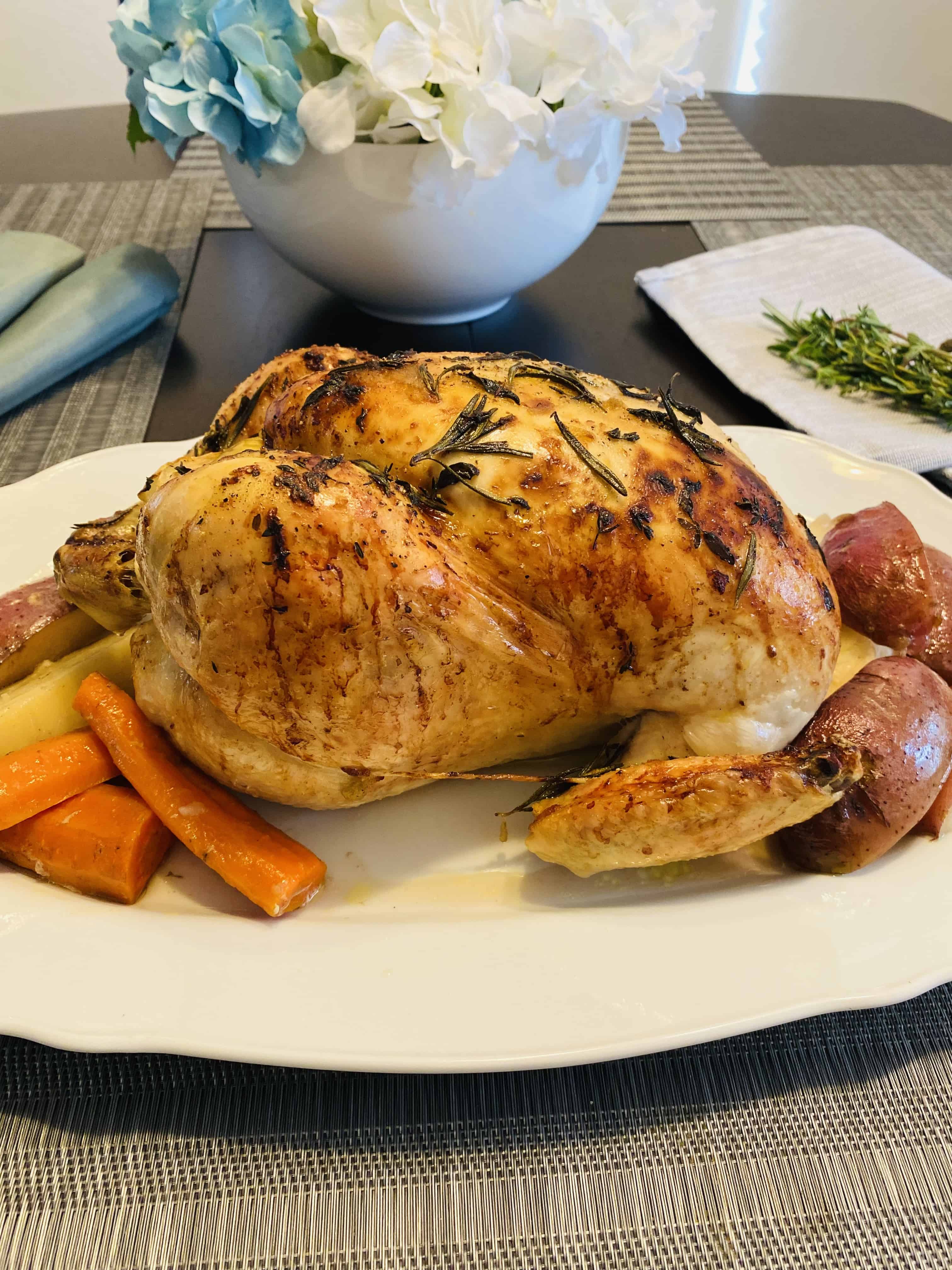If you are new to meal prepping, you may be thinking of body builders or weight loss plans that have a stack of boring food in containers ready to be microwaved, eating the same thing 5 days a week. While that takes the decision making and pressure out of deciding what to eat when you come home on Wednesday night, that isn’t sustainable for a lot of people. Variety is the spice of life, right?
The term meal planning, on the other hand simply means thinking ahead about what food you can have on hand so you know what you’re going to cook throughout the week. Meal prep isn’t just cooking all your food ahead of time. It can also mean cutting up your veggies on the weekend so you can throw them in the pan when it’s time to cook dinner to save some time during the week.
I personally use and recommend a combination of a little of both – I plan out my week, and I prep some of my foods for a few days at a time. Like most people, I started with the goals of saving money on not buying lunch out and having dinner ready to go on a busy night, and to eat healthier by having snacks ready so I didn’t reach for the chips late at night, etc. I tried the body builder style when I first started, and quickly found out that does not work for me!
For the last five years, I have been on a quest to actually ENJOY the food I cook and eat while meeting all three of what I consider the main goals of meal prep: to save time so I’m not cooking and cleaning constantly all week; to save money, which includes most importantly reducing food waste; and to eat healthier. By healthier I mean eating more whole foods, fewer processed foods, more meals I make from scratch or from half-scratch, and that I am eating enough of a variety of foods for a balanced diet that fuels me with energy so I can work out and be present for all of the things in life I love to do.
As you start on this journey, think about why you are considering planning out and prepping your food. Knowing what you are hoping to get out of the experience will help you make decisions about how to go about it later on.
There are many ways to meal prep
There are a variety of ways you can engage in what is considered meal prepping – you might already do some of these things without knowing they are meal prep activities! Below I’ve outlined some of the main strategies of meal prep. I use a mix of all three depending on a variety of factors each week, including what works best for the recipes I want to make and how much time I have during the week to dedicate to cooking.
Heat and Eat
This refers to the classic meal prepping strategy: cook a bunch of food ahead of time so all you have to do is pop an individually portioned meal into the microwave and be ready to eat in the matter of minutes. This works really well for certain foods: soups, stews, chili, and other hearty one pot meals. The pros are definitely the time it saves you during the week, though if you try to cook a full week’s worth of meals it does end up being time intensive on the weekend to prepare the meals. You also run the risk of leftover fatigue – getting sick of eating the same thing every day by the time Thursday rolls around. Utilizing the freezer for some of these make ahead meals helps both save your taste buds, preserve the food longer than a few days in the fridge, and prolongs the spoils of your labor with freezer meals for future weeks.
This method also does not necessarily mean you are preparing a full week’s worth of food in one sitting. You can prep for two to three days at a time, or even just prepare dinner one night with leftover lunch for the next day or two in mind. As I’ve worked through my own meal prep habits, with the goal of not wanting to feel compelled to order out for lunch by Friday, I’ve often divided the week in half: Cook dinner on Sunday with lunches for Monday, Tuesday and Wednesday. Cook again on Wednesday with enough food for lunches on Thursday and Friday. If you’re cooking for one like I am, a typical recipe can be easily divided into four to eat again for lunch and dinner. If you’re cooking for a family, doubling a recipe will often give you enough leftovers for the adults in the household to take lunch the next couple days.
Cooking ahead really comes down to your leftovers preference. Are you picky when it comes to how food tastes reheated? Will you actually reach for the same meal in the fridge on day three or four? I’ve found that people find the most success in meal prepping when they adapt their cooking plan to their eating preferences instead of attempting to change their life long food preferences to a new way of preparing food.
With that, here are a few meal prep variations that might help you meet your goals and eat your food!
Mix and Match
The mix and match method works well for people who don’t like to eat the same thing every day. In short, this meal prep technique means that you prepare a few options for protein, vegetables, and grains, and then you can mix and match your meals throughout the week. For example, on Sunday you may grill chicken and shrimp, prepare corn on the cob and a pan of broccoli and carrots, and cook separate pots of rice and quinoa. Package each food into separate containers, and throughout the week choose your meal as if you were at a buffet. You can add different sauces and spices each day so the meals feel extra different from one night to the next.
I’ve modified this further over the years to prepare some food ahead of time, like the veggies and rice, and then cooked the protein right before dinner. In the summer I love to grill so I might make a pasta salad ahead of time and grill my meat and vegetables each night if I have time in the week. Again, it is important to understand the options involved in meal prepping so you can make it work for you so that you eat and actually enjoy your meals all week long!
Shop and Chop
What I just described as my summer routine is starting to get into the third kind of meal prepping, which is actually most accurate in terms of matching the name meal prepping. With chop and store, you are going to prepare your ingredients, and store them in the fridge or freezer so that the prep time to actually cook your meal when it’s time for lunch or dinner is reduced. This may mean you portion out half of a package of meat and stick the rest in the freezer for another week, chop all of the veggies and fruits you’ve bought on the weekend for meals and snacks and store them in portion-sized containers. This method is my favorite way to meet goals of actually enjoying easy freshly prepared meals, and making sure there is no food waste in my house. For example, you buy a bag of carrots to make a soup. In my old routine, I would take two carrots out for the soup and leave the rest of the bag in the veggie drawer, probably to rot. Now, I use the two carrots for the soup and immediately peel and chop the rest of the bag of carrots into matchsticks and separate them into portion sized bags for snacks or other meals. This is great for steering kids (or yourself!) toward veggies instead of chips when they’re hungry.
| Heat and Eat | Mix and Match | Shop and Chop | |
| Pros | No cooking time during the week Grab and go for busy schedules or lunches Freeze a few portions for future weeks | Combats leftovers fatigue Allows for changing the sauces and flavors mid-week Offers flexibility to prepare some and cook some during week | Helps ensure no food is wasted Supports healthy snack choices Reduces the time to have freshly-cooked meals during the week |
| Cons | Time intensive on the weekend Possible leftovers fatigue | Not grab and go out of the fridge (unless you package a variety of meals in portion containers) | Cooking during week is still necessary each night |
Prepping breakfast, lunch, and dinner, oh my!
When I first started meal prepping, I barely knew how to cook in general, let alone in bulk. Compounded with the fact that at that point my only real experience with meal prepping was with a friend who ate just chicken, rice, and vegetables every day three times a day to meet his weight loss goals, and with the meal prep company advertised at my Crossfit gym, I was a little overwhelmed. I knew I couldn’t eat the same thing every day and I was really weirded out by vacuum-packed mashed potatoes, so I started to do my own research. At first I tried to mimic the company. I would spend so much time on Sundays preparing a few options for week, it felt like I was cooking SO MUCH FOOD, and either there still wasn’t enough for dinner or I was bored (and a little grossed out) by the end of the week. After a few weeks, I was discouraged. I had to really figure out a plan that would work for me, my schedule, and help me meet my food goals.
I focused first on my real pain points, which at that point was an easy breakfast I could grab and go that was healthy and filling, and making sure I had something healthy to eat at the end of a busy day. So I focused on prepping breakfast and dinner, and I filled the rest of the day with portioned snacks like trail mix, carrots and hummus, and cold meals like pasta salad and sandwiches that I knew would get me through the week. To this day, portioning out no-cook snacks is still my favorite meal prep hack! With lunch out of the way, I was able to focus on being more creative with the other two meals and that made the experience much more enjoyable.
Making meal prep work for you
Whether you are starting out on a meal prep journey or rebooting some of your existing meal prep habits, think about these questions.
- Why do I want to meal prep? What are my goals regarding food and eating?
- What barriers exist that currently prevent me from reaching my food goals?
- What type of meal prep will help me remove those barriers and reach my goals?
- What meal prep strategies will work for me and more importantly, what do I know won’t work for me?
- What is one thing I will try this week to help me meet my meal prep goals?




